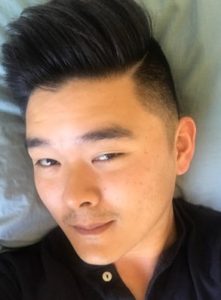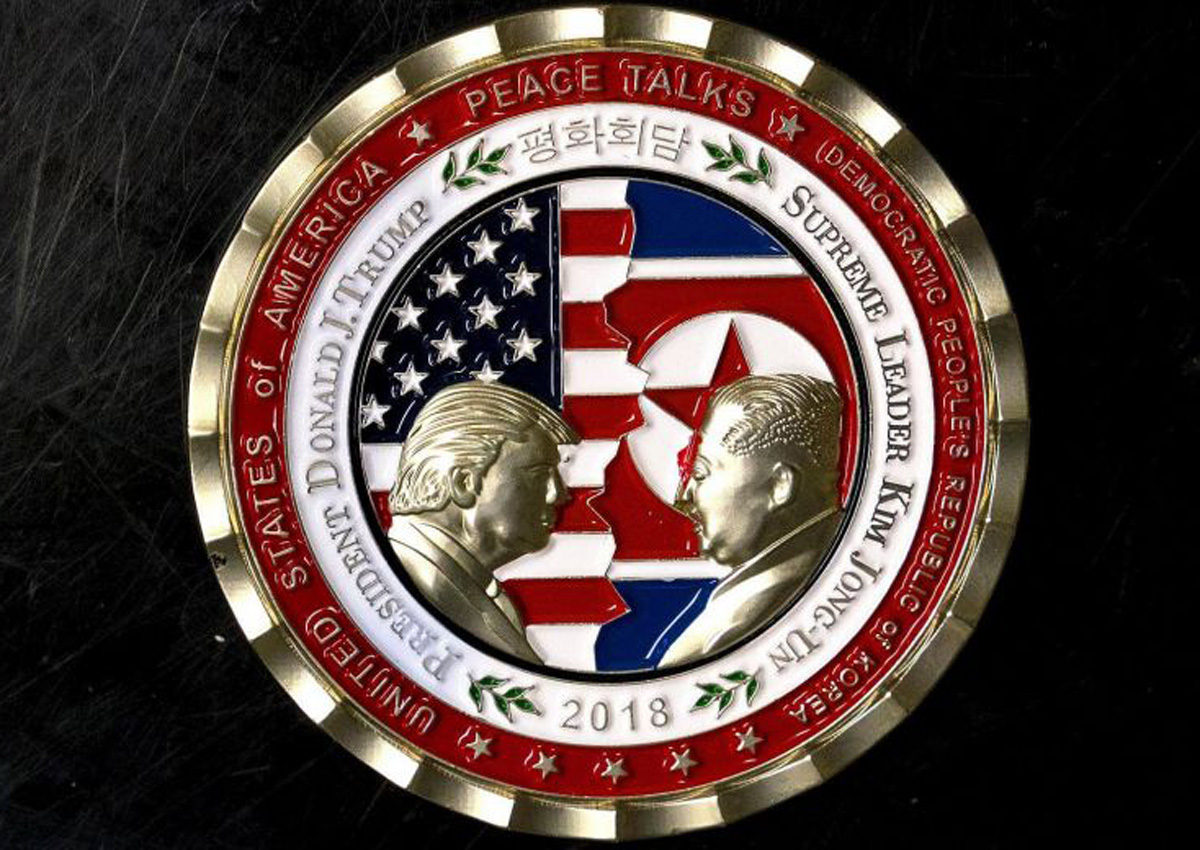By Guest Contributor: Ju-Hyun Park (@Hermit_Hwarang)
A month ago, I woke up to news I thought I might never hear in my lifetime: the leaders of North and South Korea had, after meeting at an historic summit in Panmunjom at the DMZ, announced their intention to formally end the Korean War and lay plans for reunification.
I accomplished nothing I’d intended to that morning. I called my mother and sister to talk about the news. I read and reread the declaration and watched whatever clips I could find. I celebrated and speculated over group chat with Korean friends. And, I cried. A lot.
As a child, I’d always taken the eventual return of war for granted. One of my earliest memories is of my uncle asking me whose side I would take in war: America’s or Korea’s. The war loomed over my life — at once a phantom from my family’s past and the shadow of a predetermined future.
The last year unfolded like a prophecy: the deployment of the THAAD missile defense system through military coercion and police violence, the proliferation of genocidal rhetoric from the media and elected officials, and the escalating sanctions on fuel, food aid, medicine, and trade vital to the everyday survival of northern Koreans. Together, these acts harmed and killed Korean people in real time while threatening to intensify into a war that would engulf us all. The state of affairs prior to Trump’s administration was bad enough; sanctions and occupation were killing Koreans long before any mention of “fire and fury”. Since the inauguration, things had only gotten worse. With each new development, the stress and terror accumulated in my body like a poison.
Hearing the news from Panmunjom brought something of a reprieve. For the first time in a long time, it felt like things could be better, like war was not inevitable. It was still too early to declare a future different from the one foretold — one defined by peace, unity and sovereignty rather than war, division and occupation. But for once, I could imagine it as something more than a fantasy.
This is not the first time in history that North and South Korea have pursued peace, but the circumstances of the times suggest reason to hope. The two Korean states are striving towards peace to pivot away from the dangerous rhetoric of the United States and reassert their sovereignty. This would not be possible without the work of southern Koreans who dedicated themselves to protest for over a year to remove the previous President of South Korea, Park Geun-hye, and thereby created the political conditions necessary for peace talks to occur.
Attempts to credit Trump or the US with the achievements of the Korean people amount to little more than thinly-veiled racism. US warmongering does not create peace by cowing evil into submission, and to push such a narrative with regard to Korea is to erase the 4 million people killed by US war on the peninsula. From Mike Pence’s refusal to stand for a united Korea at the Olympics to John Bolton’s insistence on the “Libya model” (promise peace for denuclearization, and then bomb Libya for seven years and counting), the US has proven itself to be the greatest obstacle to Korean peace. In spite of scheduled talks, the US and South Korea went ahead with their annual war games on the North Korean border, only diverting the involvement of nuclear-capable B-52 bombers at the last minute. On May 24, Trump brashly announced he would not attend the scheduled June 12 summit in Singapore with Chairman Kim Jong-Un, a decision made without consulting South Korea that has since been reversed, after much confusion and chaos.
The role the US has played thus far is consistent with its history of undermining Korean sovereignty since 1866, when the merchant vessel General Sherman fired its cannons on a crowd of civilians in Pyongyang. The US has always treated Korean people as collateral damage in a game between great powers. The situation today is a consequence of that dynamic. Korea was divided by the US and USSR without the consent of the Korean people or the government-in-exile. For the US, occupying Korea was key to retaining US access into continental Asia. During the Korean War, the US bombed North Korea with 635,000 tons of explosives and 32,000 tons of napalm, destroying everything above the ground (including vital infrastructure like dams, hospitals and schools). US soldiers were given orders to shoot refugees, who were deemed impossible to tell apart from North Korean soldiers. At least three million people were killed between 1950 – 1953 and millions more displaced. For decades since, the US has upheld disastrous sanctions against North Korea and collaborated with South Korean dictators in killing their own people. The South Korean government under Rhee Syngman murdered at least 30,000 people in the Jeju Island Uprising, and up to 300,000 more in the Bodo League Massacre. 600 more were killed during the Gwangju Uprising against US-backed military dictator Chun Doo-Hwan, who acted with the full knowledge and support of President Jimmy Carter.
If history tells us anything, it’s that hope is undeserved. Not because North Korea is especially untrustworthy, but because the US has no past or active interests in peace on the peninsula. I hold onto that hope nonetheless, but I am careful not to nourish it too much. The history of unilateral and colonial US action on the Korean peninsula is long, the history of Korean subjugation and invasion by empires even longer. Fear lingers like an oil slick, seeping from the immediate to the distant. Today, there is the question of a long-awaited peace. Tomorrow, we face the open horizons of the future, and the uncertainty contained in the question posed by anti-war and abolitionist activist Hyejin Shim, “When war ends, what will grow in its place?
Whatever should arise out of today’s summit, a neat and happy ending should not be expected. A unified and nonaligned Korea free from occupation would undermine US hegemony in the Pacific, the ultimate purpose of its militarization of Korea. The history of US-Korea relations demonstrates the US will prioritize its strategic interests over millions of Korean lives, regardless of which party is in power. Even if a peace treaty and trilateral nonaggression pact are signed as a result of the summit, it will more than likely not mean the end of US militarism or imperialism in Korea. Empires do not surrender power unless compelled by circumstance.
Korea’s situation is not unique. Since the beginning of the inter-Korean peace process, the US has bombed Syria, cut its nuclear deal with Iran, and remained silent as US arms, training, and financing are used by Israel to massacre hundreds of Palestinians, Saudi Arabia to bomb Yemen, and the fascist governments of Honduras and the Philippines to slaughter their people. Just as white supremacy arbitrates life and death within the US, it also determines the conditions of people living beyond US borders. The racism that structures US society also structures US foreign policy, and the racist perceptions the US produces about lands and peoples beyond its borders also inform its domestic policies. Domestic white supremacy and US imperialism are two sides of the same coin, two faces of the global structure of racial capitalism. Racial capitalism is a term created by political and social theorist Cedric Robinson, who theorized capitalism and racism as coeval and interdependent components of a single world system that operates through “slavery, violence, imperialism and genocide.
As with other white empires before it, the US has accumulated power and wealth through violence against those deemed violable by racialization. In the lands once known as the Orient, warfare, occupation, sexual violence, exploitation, ecocide and alliances with fascist governments have allowed the US to retain the Asia-Pacific region as the largest market of its goods, including the $600 billion global arms trade. Currently, the US admits to being involved in seven wars, including its most recent in Niger, deploys troops to over 130 nations, and has held military bases in more than 70 others for decades. Schools, markets, hospitals, weddings and homes are bombed across Afghanistan, Iraq, Syria, Yemen, Libya, Pakistan, and Somalia with such frequency that individual incidents rarely become top stories in the US. Millions in Cambodia, Vietnam and Laos live with the lingering effects of dioxin poisoning and countless undetonated explosives. 70 years and over 60 nuclear tests later, the peoples of Bikini and Enewetak Atolls in the Marshall Islands have yet to return to their homelands. In Hawaii, American Samoa and the Mariana Islands, US military occupation upholds the conquest of Indigenous peoples and lands. And from South Korea to Okinawa, communities living in the shadow of US military bases suffer from ecological destruction, economic deprivation, political repression, sexual violence and murder at the hands of US soldiers. In every place touched by war and empire, it is women, queer, transgender and nonbinary people, sex workers, people with disabilities, children and the poor who pay the steepest price. To quote Sora Han, “The United States is not at war. The United States is war.”.
The white supremacy of US foreign policy informs and contours white supremacist policies and violence within US borders. For US Asian and Pasifika communities, racist policies and organized white violence are deeply linked to the political position of our homelands vis-à-vis US and Western empire. The incarceration of people of Japanese and Aleutian descent in WWII was an act of war connected to the US and Japan’s struggle for dominance in the Pacific. State and non-state violence against Southeast Asians are directly linked to the US wars in Vietnam, Cambodia, and Laos. Similarly, white civilians and the state target Muslim, North African, West and South Asian communities as the domestic front of the War on Terror. The economic power of sending countries and communities determines the economic journey of every Asian ethnic group and wave of migration in US history. Euro-American expansion into the Indo-Pacific and the abolition of chattel slavery preceded the first wave of Asian migrants. The violence these migrants faced is an essential feature of racial capitalism. Violence made their labor available for exploitation, upheld anti-Black and white supremacist racial hierarchies, and protected white title over freshly-stolen Indigenous land. Not all people categorized under the label of “API” and its sibling acronyms have the same relationship to the politics of land and labor. The mass incarceration and systemic deprivation of Native Hawaiians are tools of conquest used to appropriate land and resources for the strategic interests of the US military and capital. Asian settlers benefit from the status quo at the expense of Native Hawaiians.
There is no single story of all Asian and Pasifika communities—the category “API” itself reflects US geopolitical interests and Orientalism more than shared experience, culture or positionality. Some of us are refugees of American invasions, others are immigrants displaced by US-sponsored fascism or drawn here by the crushing gravity of this country’s enormous capital. For Native Hawaiian, Chamorro and Samoan peoples, “becoming American” is synonymous with direct conquest, as was the case for Filipinxs prior to independence. Despite these crucial qualitative differences, the haunting of empire is a common thread across communities and borders, contextualizing and structuring diaspora and conquest. White supremacy is not a matter of cultural misunderstanding or innocent ignorance but material and libidinal investment in domination. The struggle is not just about discrimination and exclusion, but the system of racial capitalism itself. Our lives do not become freer or more peaceful because a few of us reach exalted status within a system sustained by the exploitation and subjugation of our homelands and communities in diaspora.
The military-prison-surveillance complex upholds racial capitalism through violence. If our commitments to ending white supremacy are as serious as we say, we must work to abolish police, prisons and the military and thereby remove racial capitalism’s ability to sustain itself. This includes the formal state institutions themselves as well as private interests such as weapons manufacturers, financial institutions and any other entities that depend on incarcerated slave labor or military, prison and police contracts for business.
The military is not always mentioned in the conversation on prison and police abolition, but demilitarization is a necessary component. Police departments routinely receive military equipment (including chemical weapons and armored vehicles), personnel and training to deploy in their mission of defending whiteness and private property. When Black and Native communities revolt, as seen in Ferguson and Standing Rock, they are suppressed by the National Guard, an arm of the US military. Tax funds that could be spent on public services or direct support for the police’s primary targets are siphoned away into a $900 billion military budget. $300 billion of this formidable amount is then funneled into corporate coffers, further enriching those who profit from war, policing, incarceration and deportation. The military and policing apparatuses also justify and reinforce each other in order to discourage dissent. We are told the military must be funded as it is to keep us safe from foreign, racialized enemies (who, for the past century, have nearly always been Orientals of some variety). The social unrest and dysfunction resulting from the militarization of society (underfunded public services, weapons proliferation, glorification of violence and mass untreated trauma in veterans and their victims) is then contained by police and prisons, who similarly justify their funding, growth and brutality with myths of Black and (presumed non-Black) immigrant criminality.
What we are facing is more than an “API” issue. Prisons and police evolved out of chattel slavery and uphold Black captivity to this day. The US military’s first campaigns fought against the Indigenous nations of this land, and have extended the reach of US empire into Latin America and Africa in addition to continental Asia and the Pacific Islands. In every theater of US occupation and war, internal or external, sexual and gender violence are perpetuated by the state to repress dissent and uphold domination. As these institutions inflict routine violence on targeted populations, the economic order they uphold threatens to plunge the planet into climate catastrophe and mass extinction.
We are facing a crisis of life itself. The only way out is an end to the systems of death and destruction that structure our status quo. We must act quickly and across communities to break the hold of racial capitalism in our homelands and on Turtle Island. For the liberation of all colonized peoples. For the earth and its waters. For life itself.

Ju-Hyun Park is a Gyopo essayist and storyteller whose writing can also be found at Juhyundred.com. You can also follow him on Twitter at @Hermit_Hwarang, and support him on Patreon here.
Learn more about Reappropriate’s guest contributor program and submit your own writing here.


